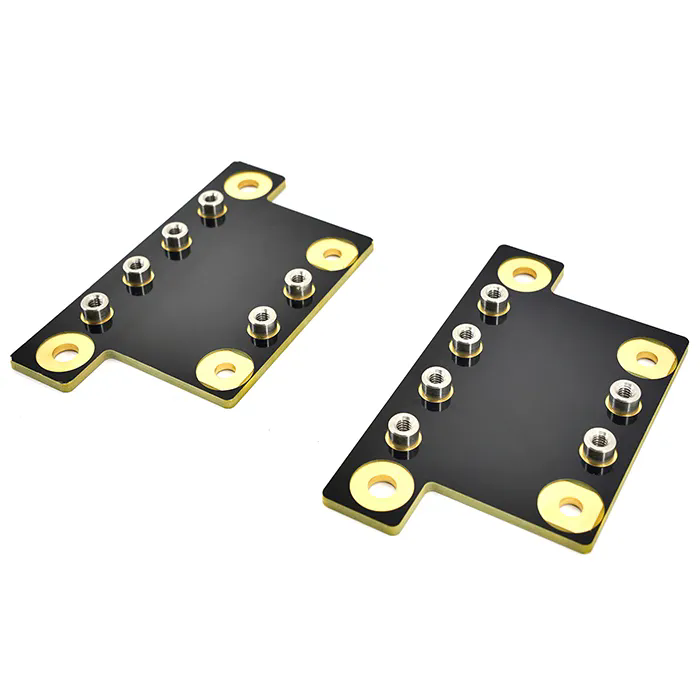Embedded Busbar PCB: Your Questions Answered
2024-10-30
Embedded busbar PCBs are an innovative solution in the realm of electronics, combining traditional circuit boards with busbar technology. This approach is especially useful for high-current applications, where efficiency and performance are paramount. In this blog post, we will address some common questions about embedded busbar PCBs, their applications, and their benefits.
What Is an Embedded Busbar PCB?
An embedded busbar PCB is a printed circuit board that integrates busbars—conductive metal strips or bars that distribute electrical power—directly into the PCB design. This design enhances the electrical connections and allows for high current carrying capacity while maintaining a compact form factor.
How Does an Embedded Busbar PCB Work?
Embedded busbar PCBs function by allowing power to be distributed across multiple components without the need for external wiring. The busbars within the PCB act as conductive paths that deliver power from a source to various loads or circuits on the board. This integration minimizes the resistance and improves the overall efficiency of the power distribution system.
What Are the Advantages of Using Embedded Busbar PCBs?
1. Space Efficiency: By embedding busbars within the PCB, manufacturers can save space compared to traditional systems that require separate busbars and extensive wiring.
2. Reduced Weight: The integration of busbars into PCBs can lead to lighter assemblies, making them ideal for applications where weight is a critical factor, such as in aerospace or automotive industries.
3. Improved Thermal Management: Embedded busbars can help dissipate heat more effectively due to their larger surface area, reducing the risk of overheating in high-current applications.
4. Enhanced Reliability: Fewer components and connections mean reduced points of failure. Embedded designs can improve the overall reliability of electronic systems.
5. Streamlined Manufacturing: The integration of busbars simplifies the manufacturing process, leading to shorter production times and lower labor costs.
What Applications Benefit from Embedded Busbar PCBs?
Embedded busbar PCBs are particularly advantageous in various high-power and high-performance applications, including:
- Power Distribution Units (PDUs): Used in data centers and telecommunications to distribute electrical power efficiently.
- Electric Vehicles (EVs): Essential in managing the power distribution between batteries, motors, and other electronic components.
- Industrial Automation: Utilized in machinery and equipment where high current levels are common.
- Renewable Energy Systems: Beneficial for solar inverters and wind turbines where efficient power management is critical.
- Telecommunications Equipment: Important for routers, switches, and other devices requiring robust power distribution.
How Do You Design an Embedded Busbar PCB?
Designing an embedded busbar PCB involves several key steps:
1. Determine Requirements: Assess the power requirements, including current ratings and voltage levels, to ensure the design meets application needs.
2. Select Materials: Choose suitable materials for the busbars and PCB substrate. Common materials include copper for busbars and FR-4 or aluminum for PCBs.
3. Circuit Design: Use PCB design software to create the circuit layout, integrating busbars into the design while ensuring proper spacing and connections.
4. Thermal Analysis: Conduct thermal simulations to analyze heat dissipation and ensure the design can handle the expected thermal loads.
5. Prototyping and Testing: Once the design is complete, create prototypes and conduct testing to validate performance and reliability before full-scale production.
What Should You Consider When Choosing a Manufacturer for Embedded Busbar PCBs?
When selecting a manufacturer for embedded busbar PCBs, consider the following factors:
1. Experience: Look for manufacturers with experience in designing and producing embedded busbar technologies.
2. Quality Assurance: Ensure the manufacturer has stringent quality control processes in place to guarantee the reliability of the PCBs.
3. Customization: Choose a manufacturer that offers customization options to tailor the design to your specific requirements.
4. Lead Times: Inquire about production lead times and their ability to meet your project deadlines.
5. Technical Support: Look for manufacturers that provide technical support throughout the design and production process.
Conclusion
Embedded busbar PCBs represent a significant advancement in the field of electronics, offering a combination of efficiency, reliability, and compactness. As industries continue to demand more robust power distribution solutions, understanding the advantages and applications of embedded busbar PCBs will help businesses make informed decisions. If you have further questions about embedded busbar PCBs or need assistance with your project, feel free to reach out!



